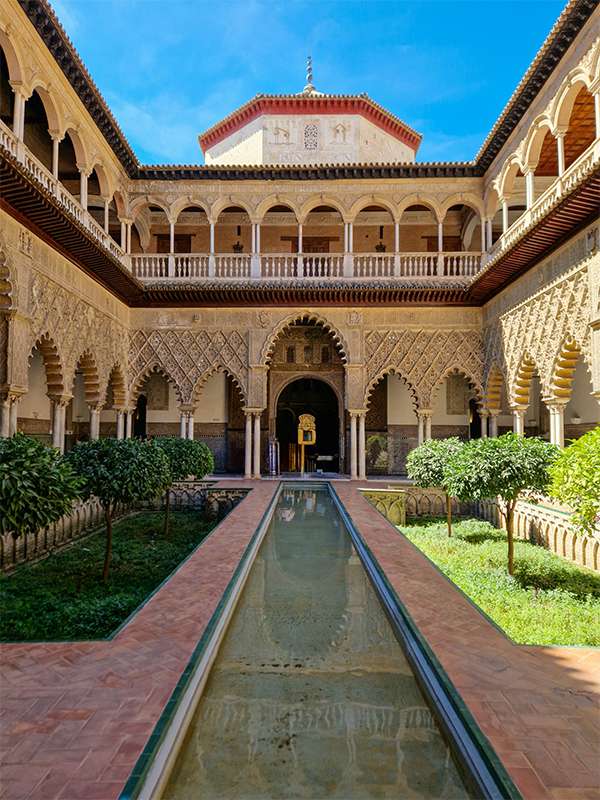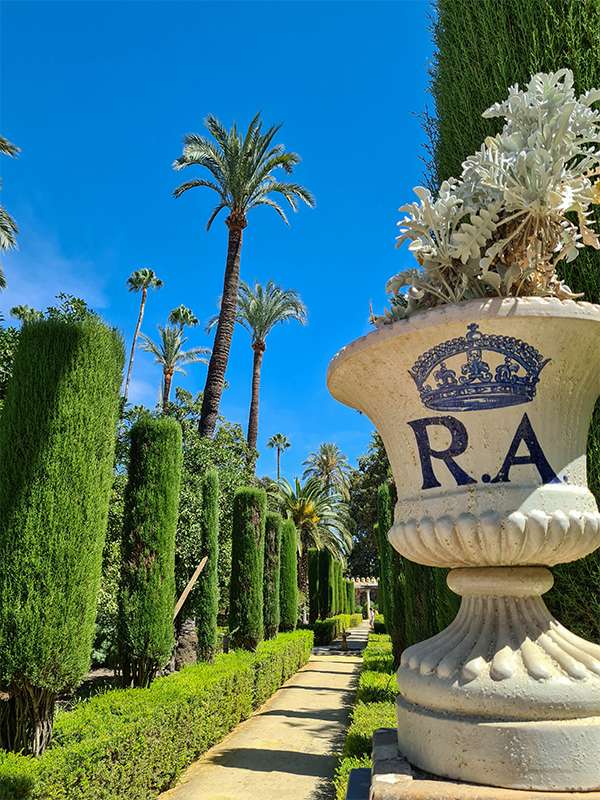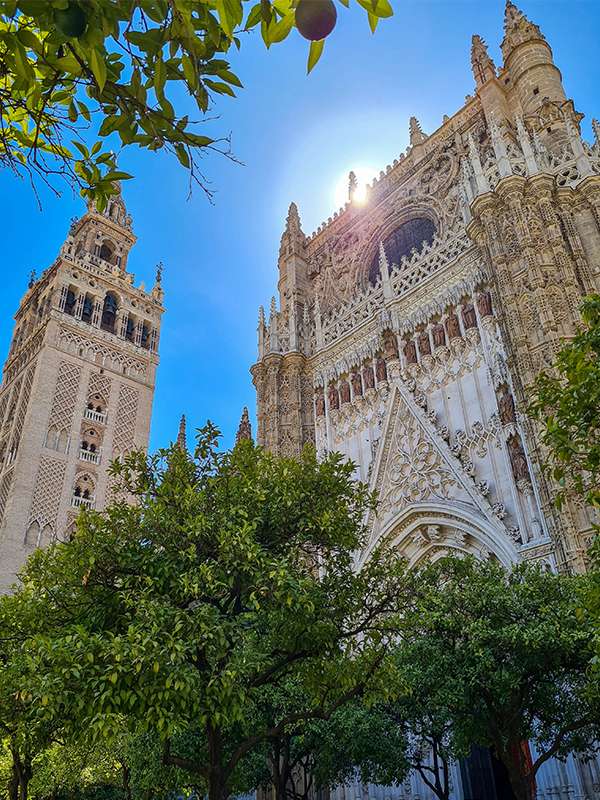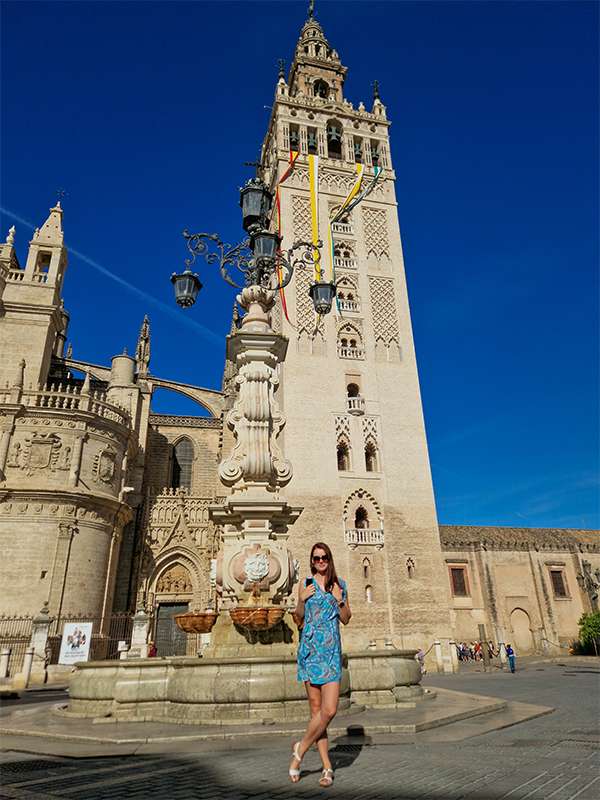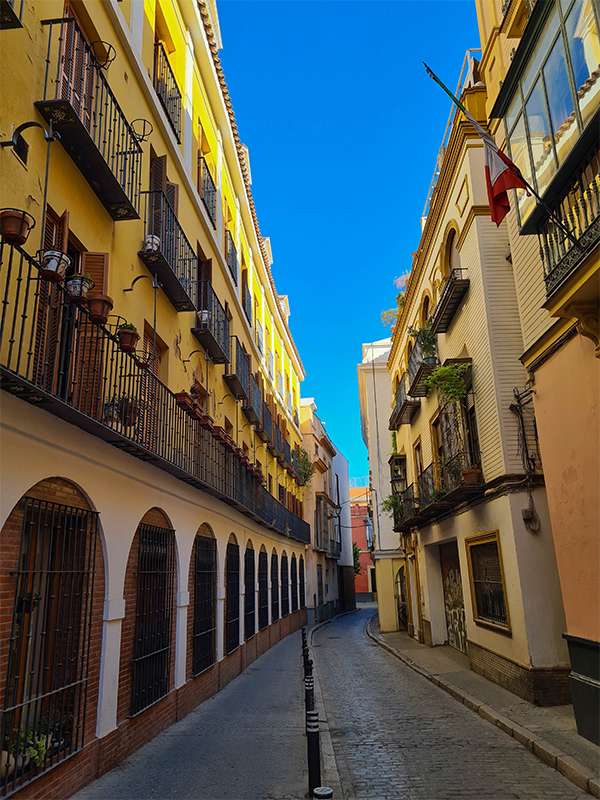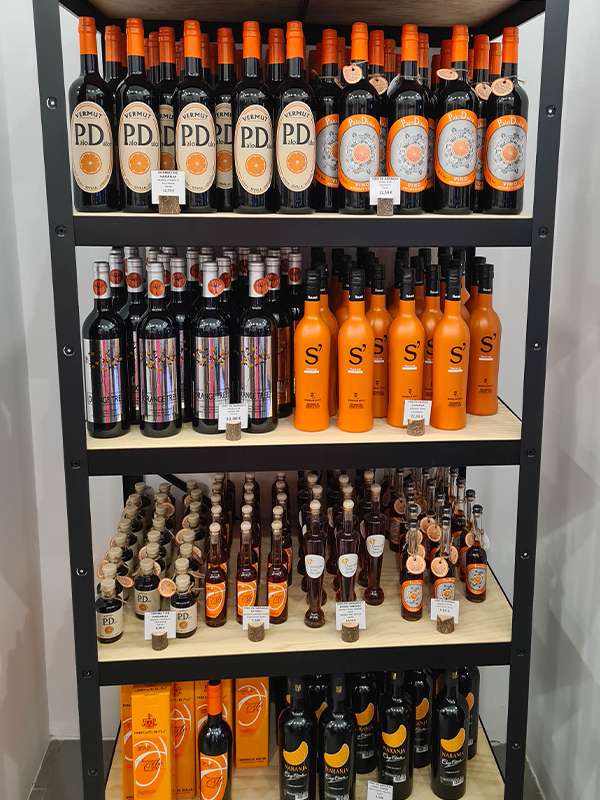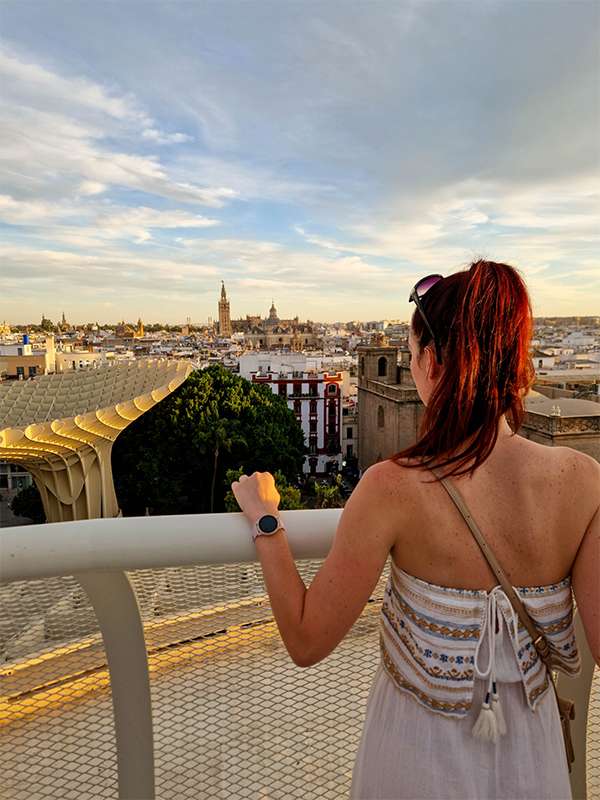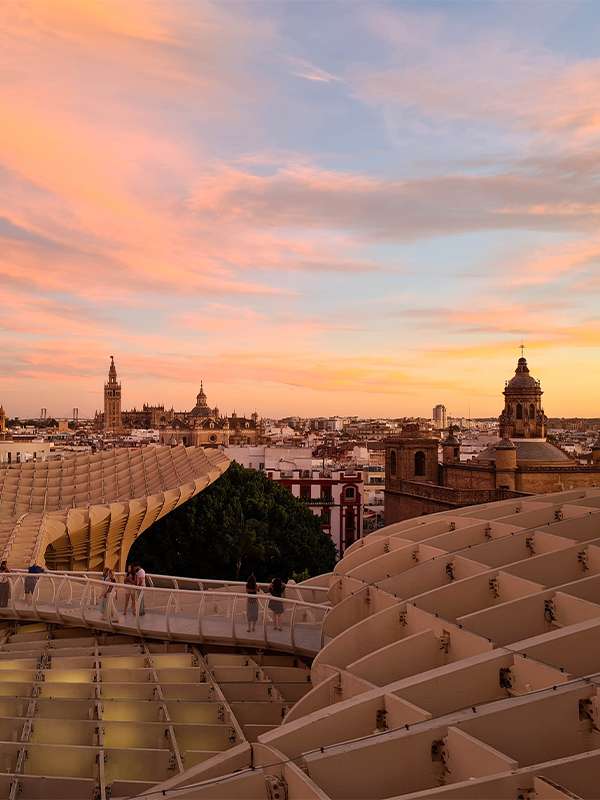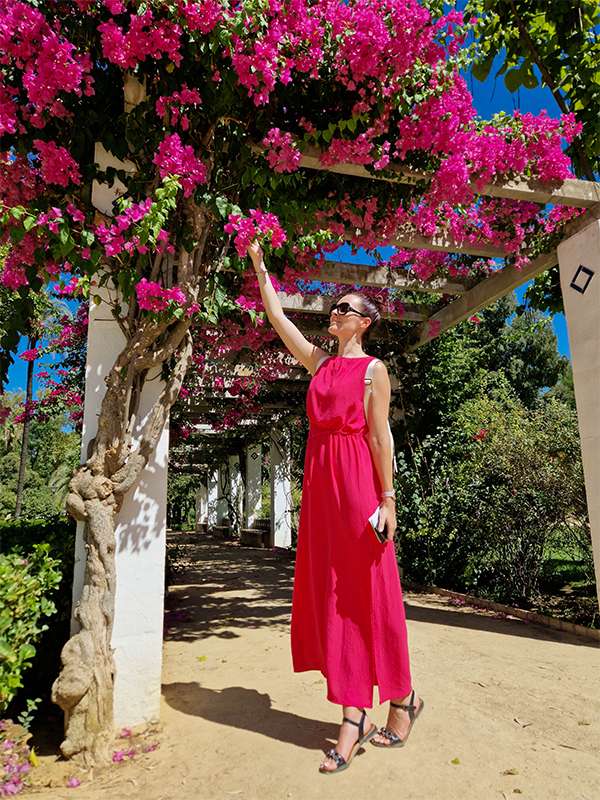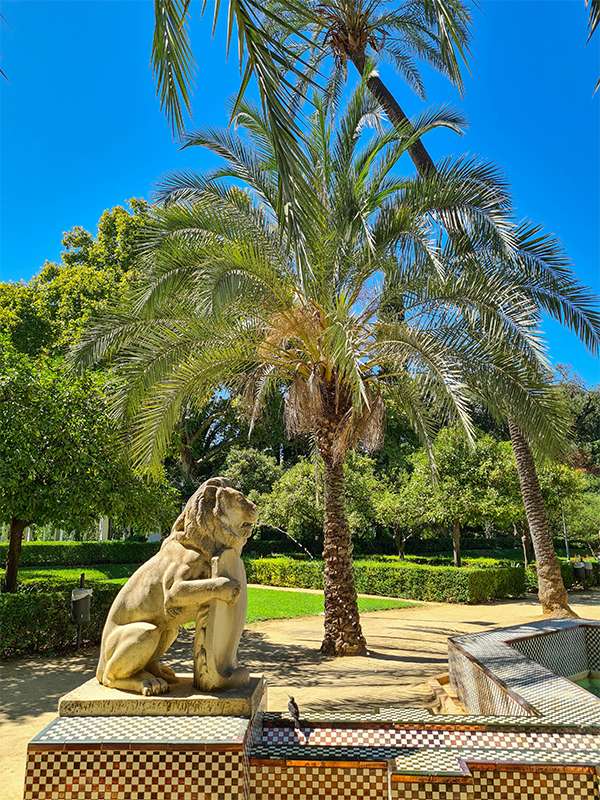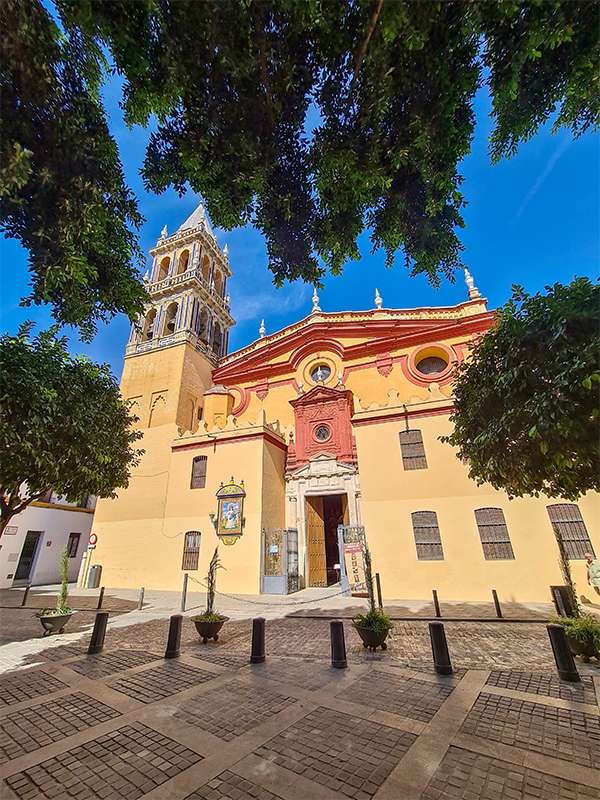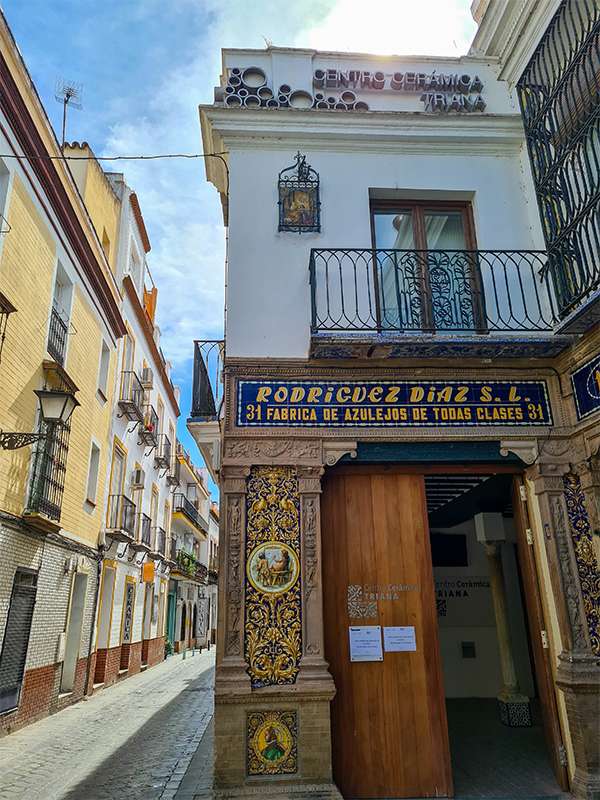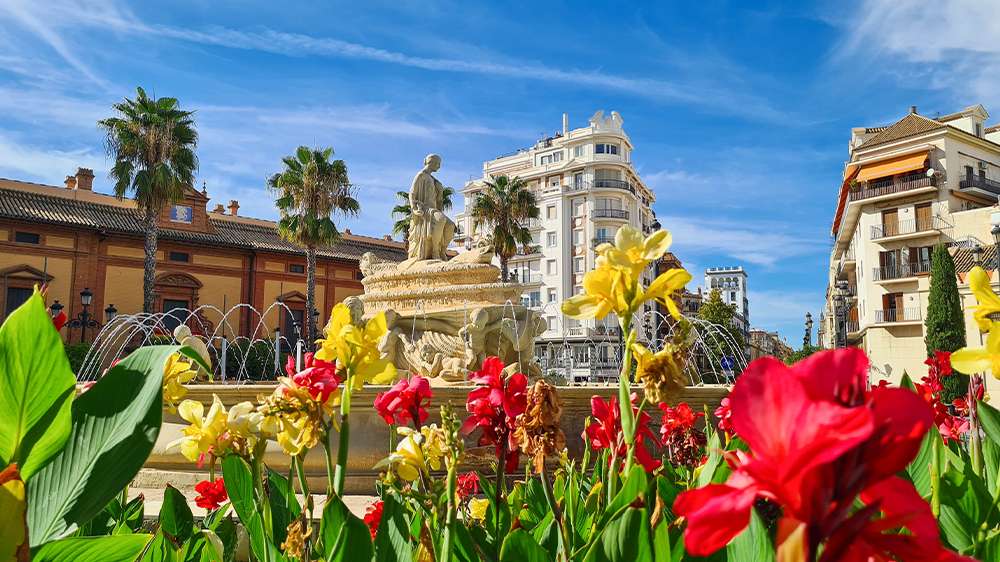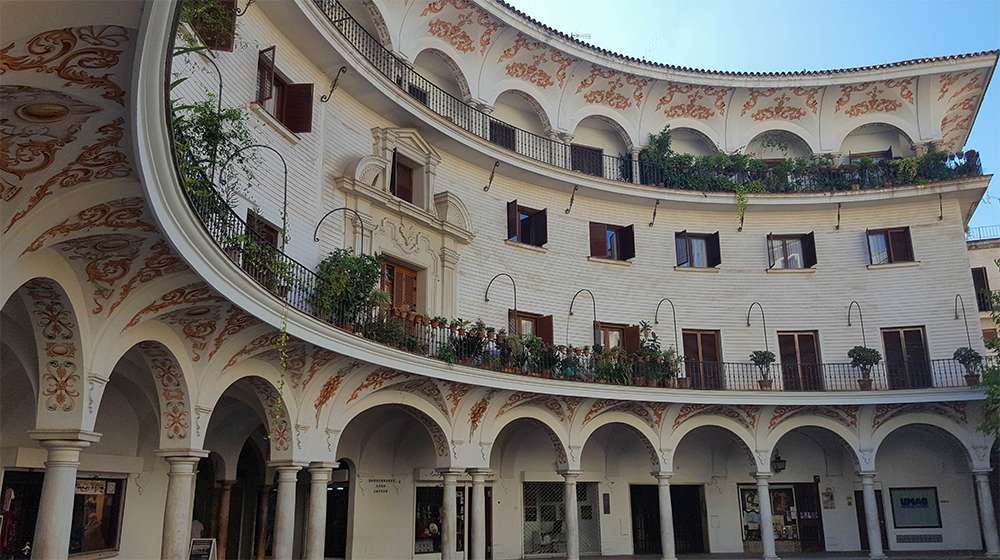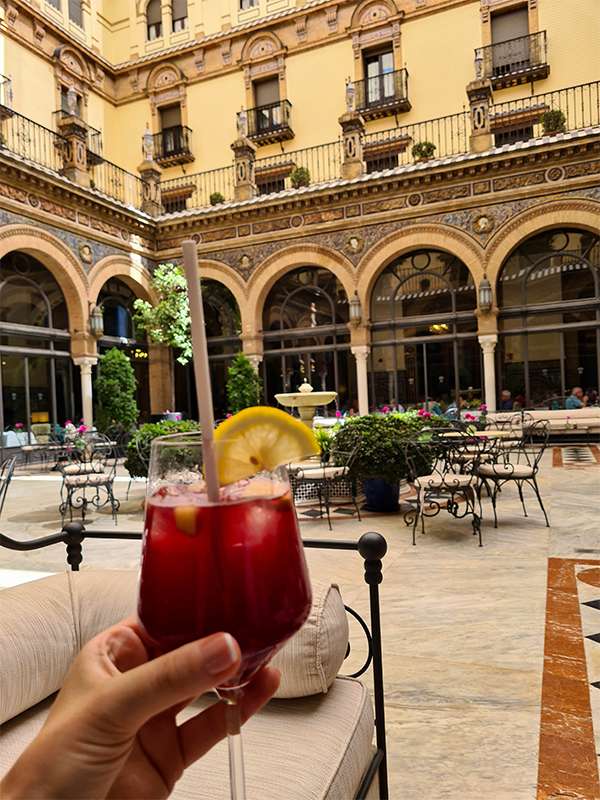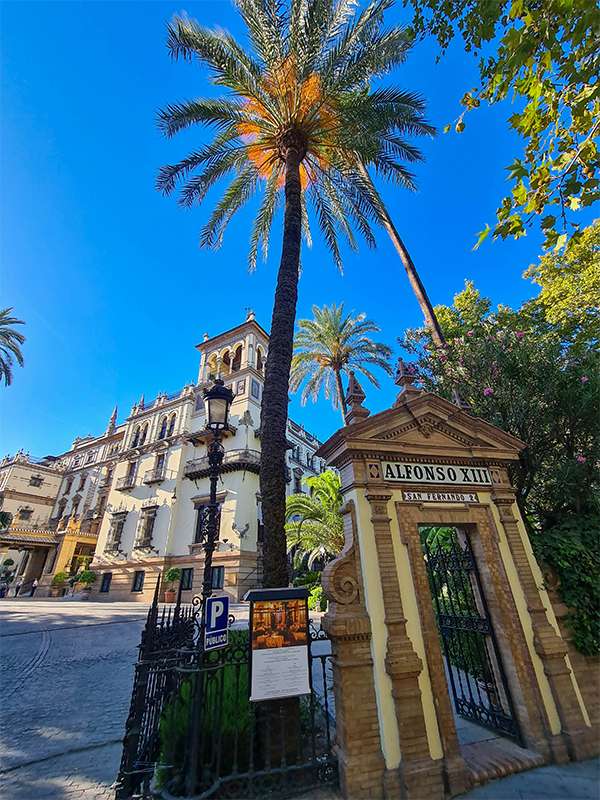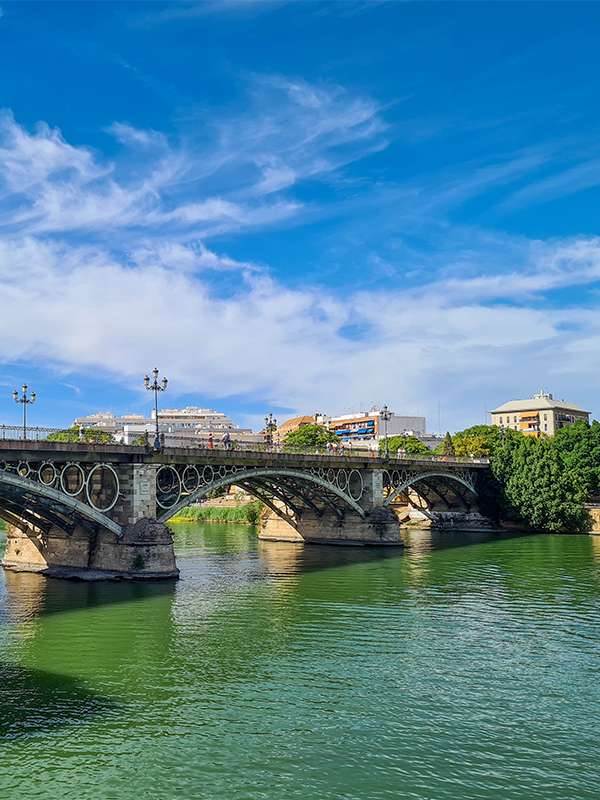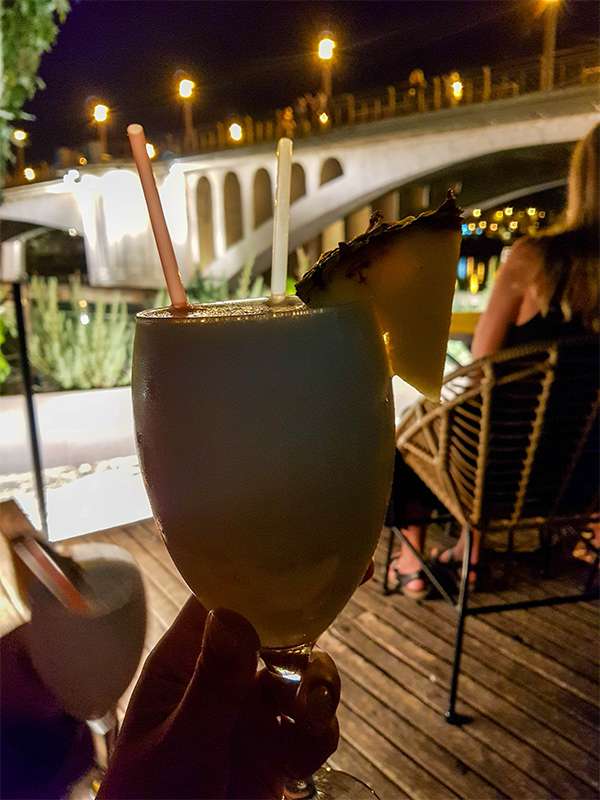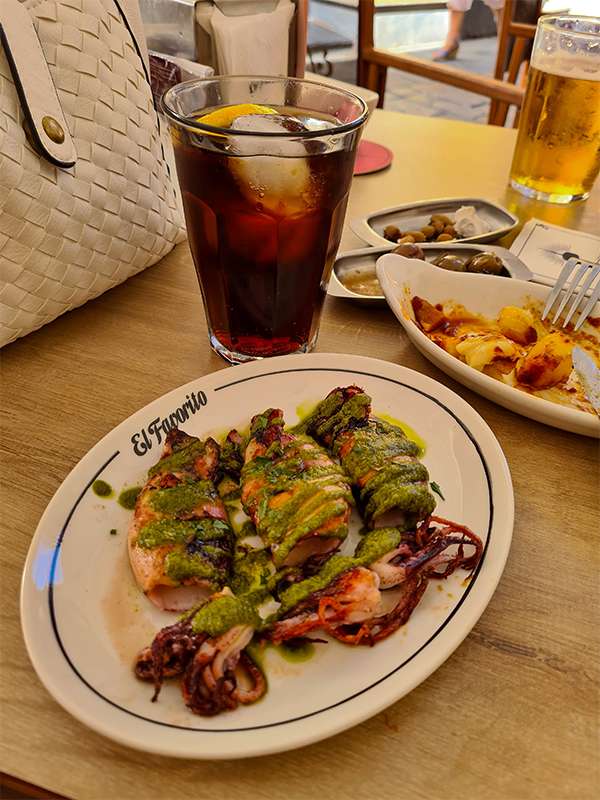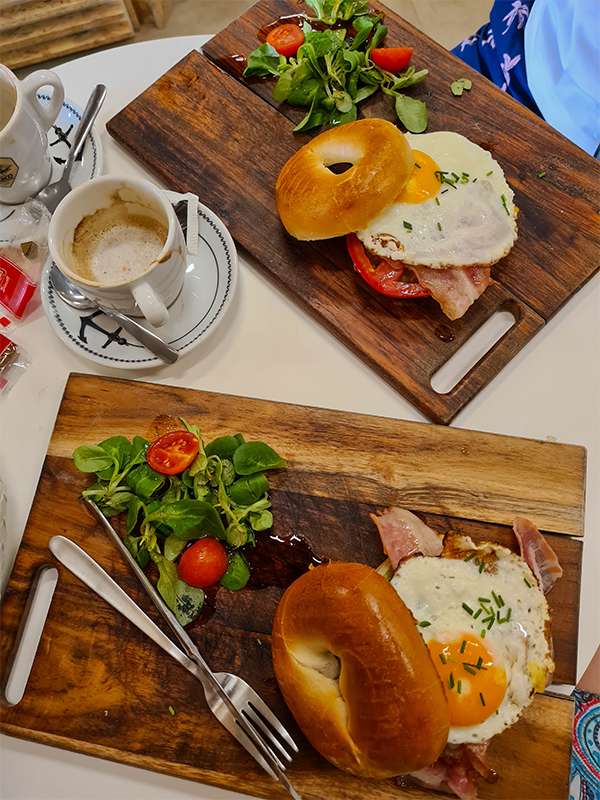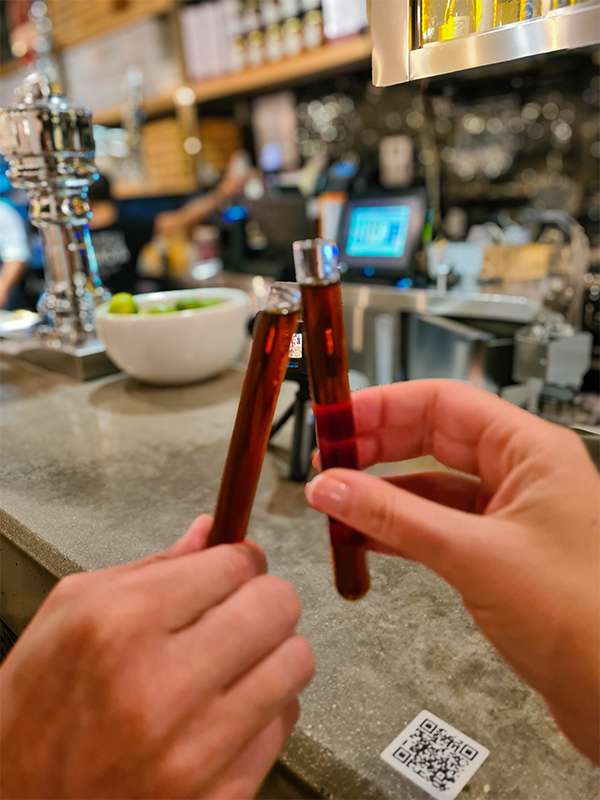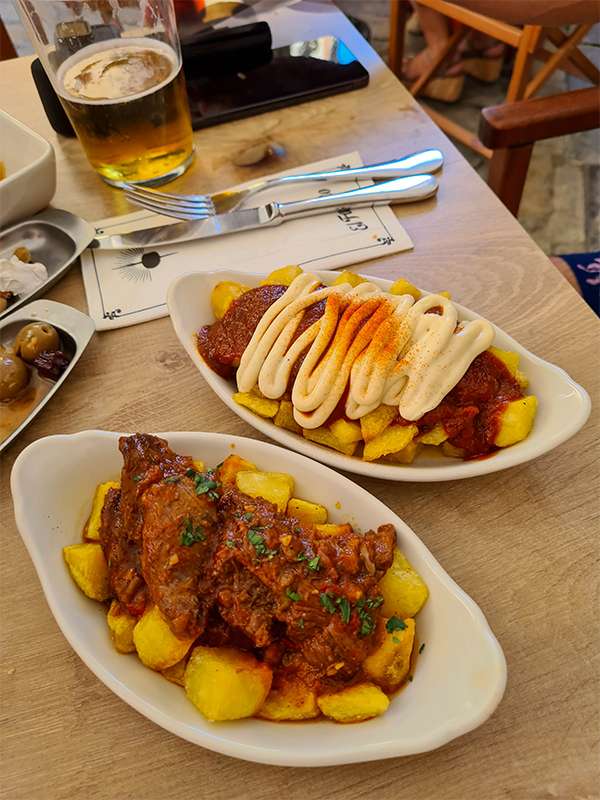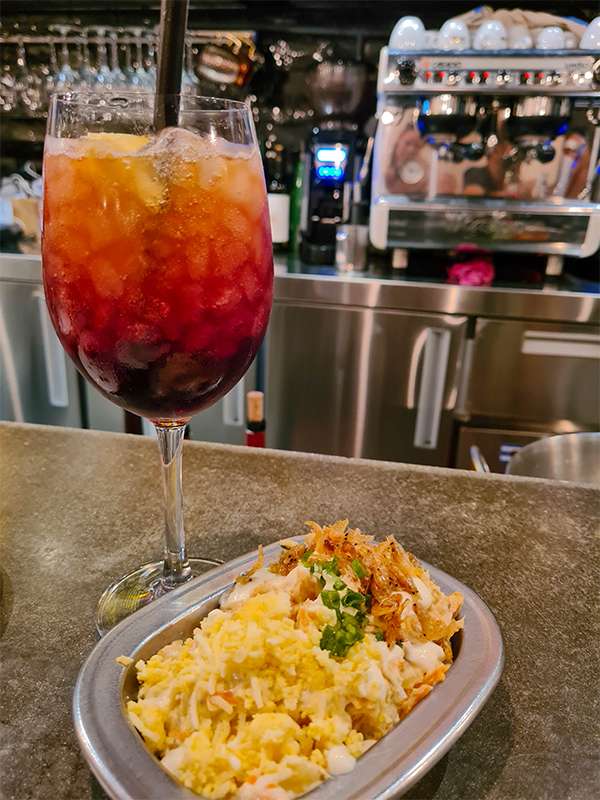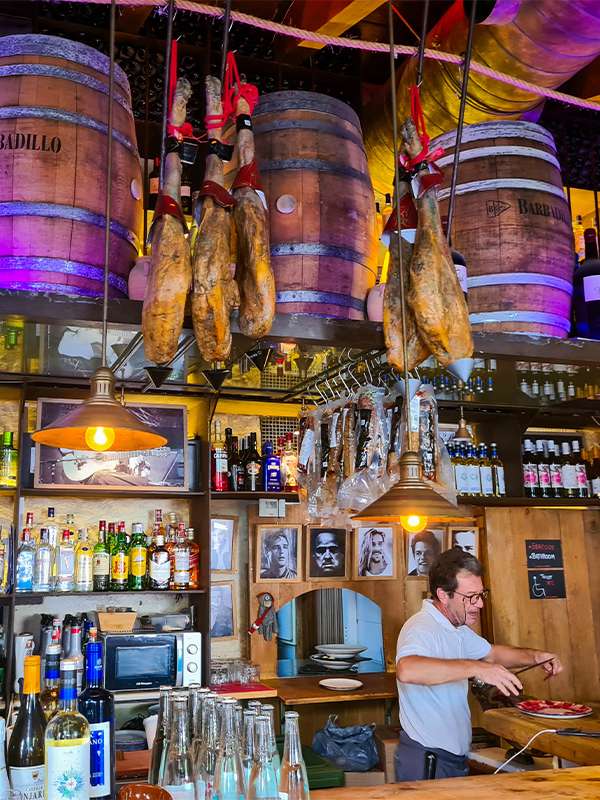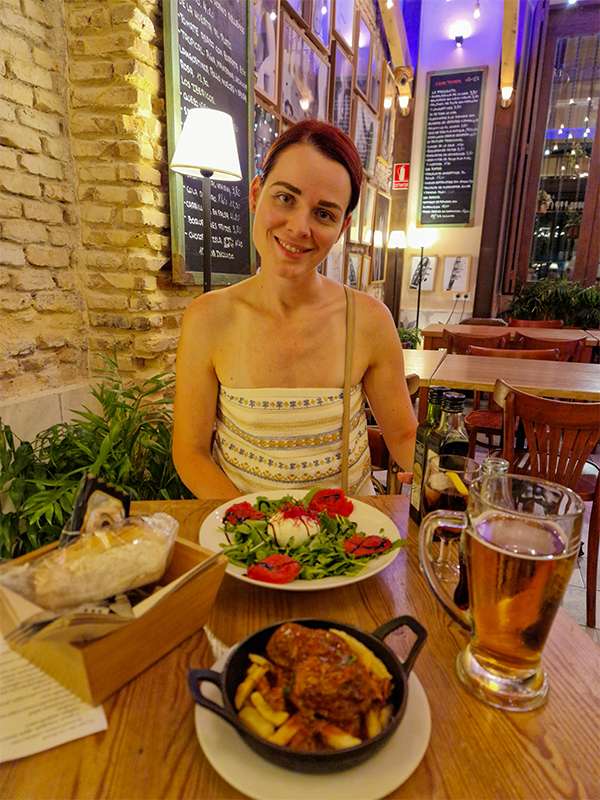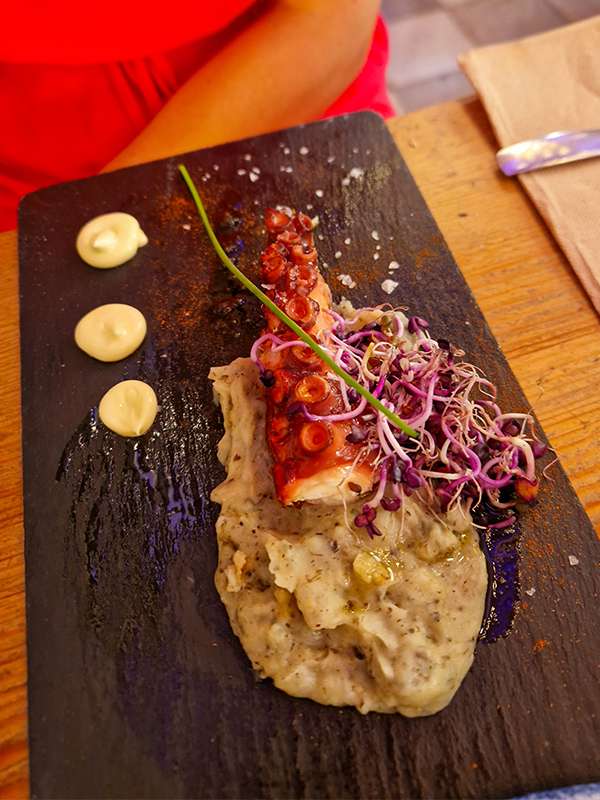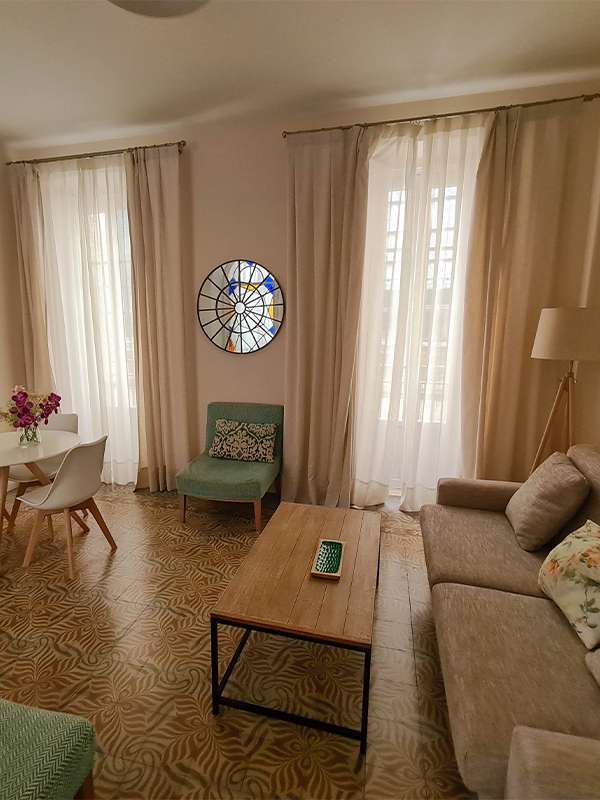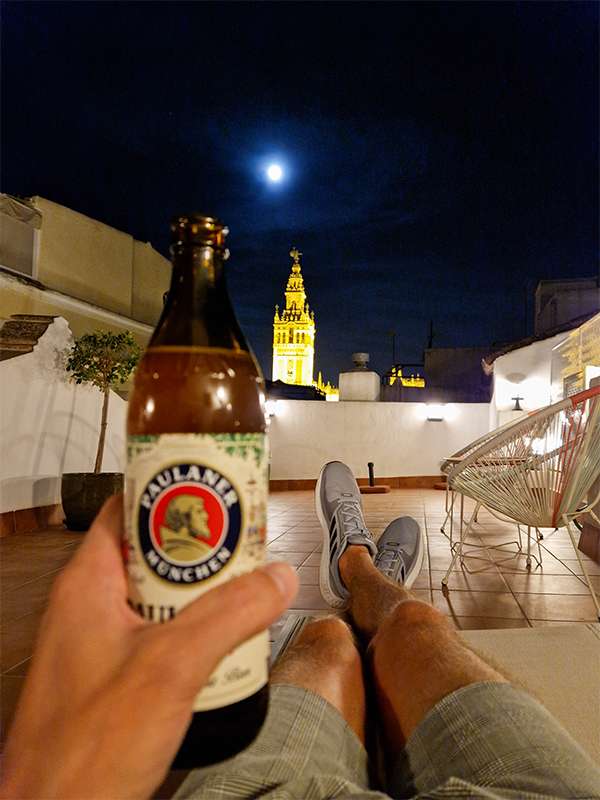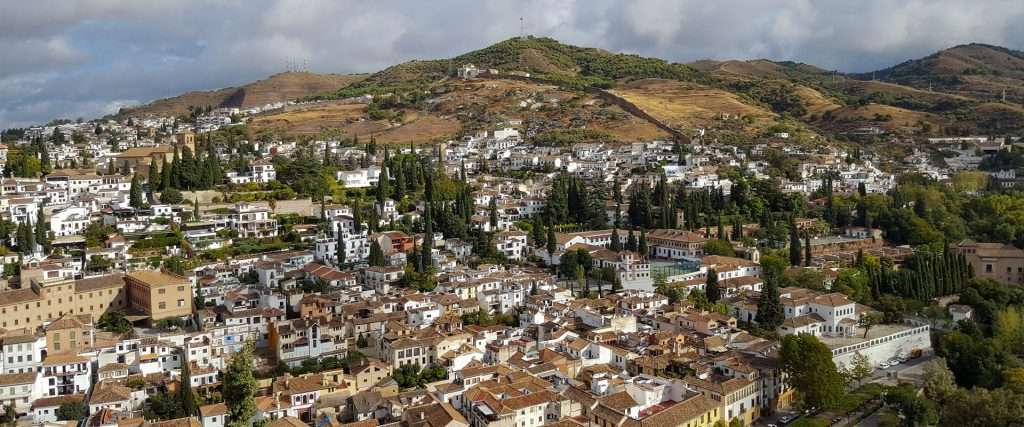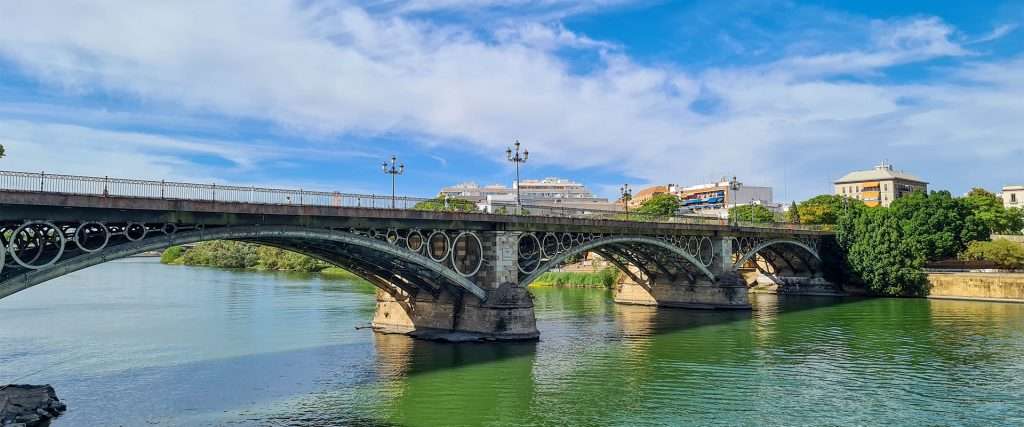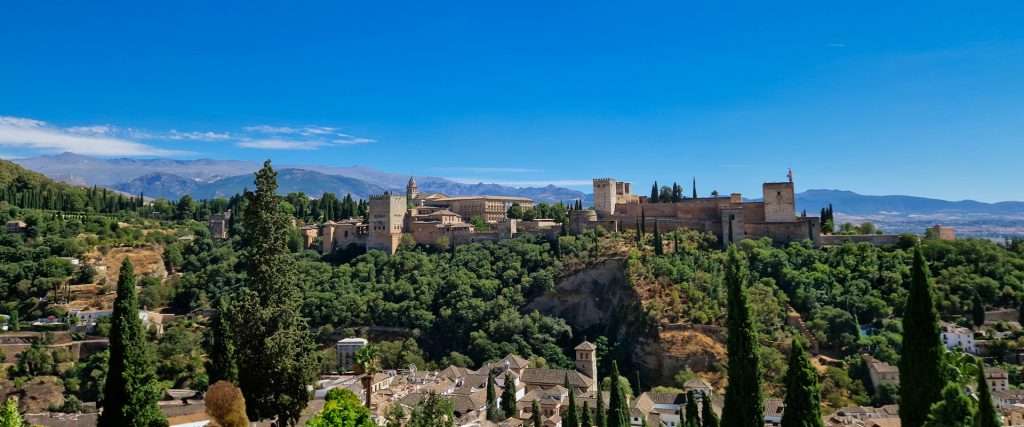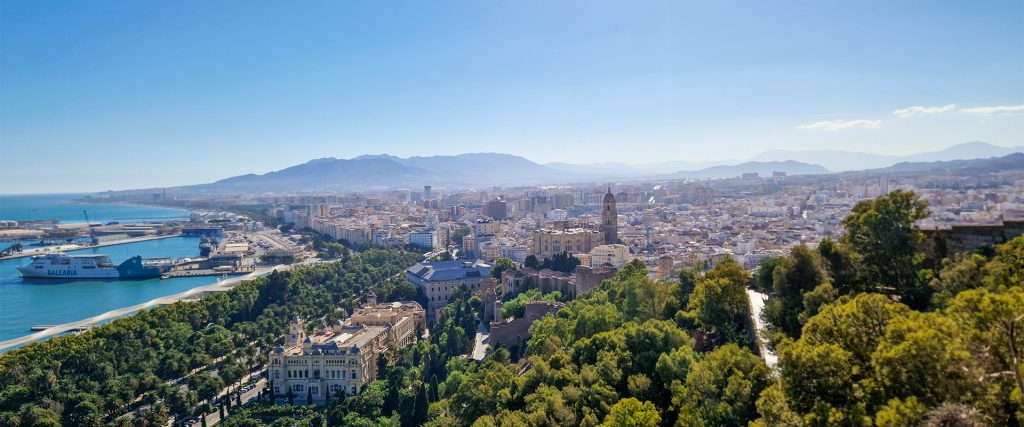Looking for the best things to do in Seville, Spain? Let me take you to a place that stole my heart, not just once, but three times! Seville is the kind of city that wraps you in warmth the moment you arrive. The scent of orange blossoms in the air, the golden light bouncing off terracotta walls, the sound of flamenco echoing through hidden alleyways; it’s a place that simply radiates joy.
Why Visit Seville?
I first visited Seville during my very first solo adventure, a 10-day trip across Spain that started in Madrid and ended here, in the heart of Andalucia. And wow, what a way to end a trip. It was love at first sight. I remember walking its vibrant streets, completely smitten by the colours, the food, the music, the architecture… and that feeling of safety and ease you don’t always find when traveling solo.
Seville became the place where I paused and reflected on everything that solo trip meant to me: the courage to go, the joy of exploration, and how travel can change you in just a few days. It truly was the symbol of happiness and freedom.
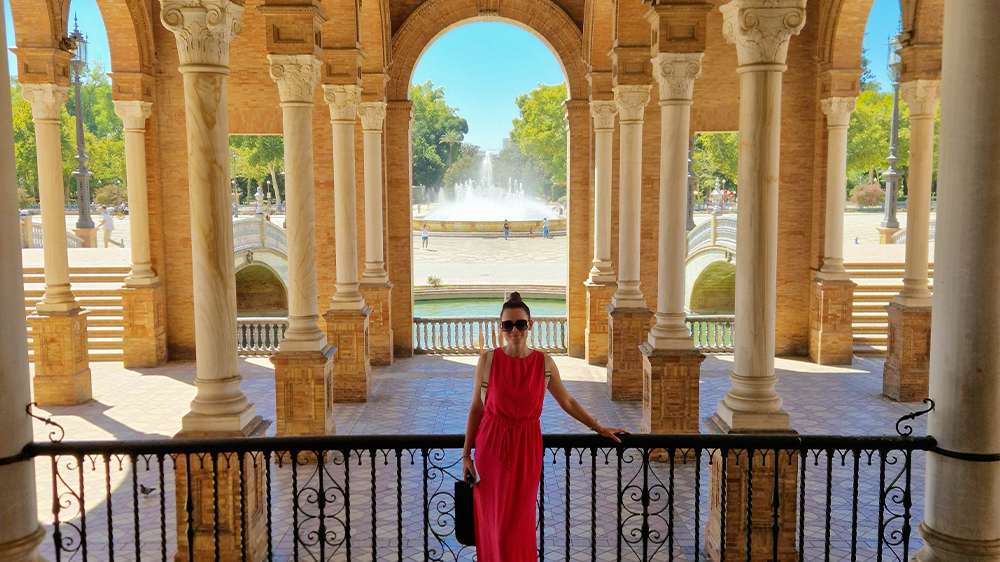
Why I Keep Coming Back
Since then, I’ve returned two more times: once to end a Portugal–Spain trip (because honestly, I just had to cross back over into Spain for another taste of Seville!), and again after visiting Málaga and Granada, before continuing to Portugal’s Algarve. Each time felt like coming home.
There’s just something magical about Seville. Maybe it’s the year-round sunshine, the energy of the streets, or the way life spills out onto every plaza and café terrace. Whatever it is, this city has a way of staying with you and calling you back.
So, if you’re planning a trip and looking for must-visit tourist places in Spain, Seville deserves a spot on your list.
Did you know?
Seville’s famous Feria de Abril (April Fair) actually began in 1846 as a modest livestock fair. Yet, today it floods the city with nearly a million visitors, rows of glittering casetas, flamenco dancing, and horse-drawn parades over six magical nights. From its humble origins to a fi ësta of unforgettable spectacle, the transformation is truly a Sevillan success story.
Best Things to Do in Seville, Spain
Seville is full of charm, history, and year-round sunshine. It’s the kind of place that captures you instantly and keeps surprising you every time you return. From iconic landmarks to hidden gems, this city offers an experience that feels both timeless and alive. If you’re planning a trip to Spain, Seville deserves a spot on your itinerary.
1. Visit the Real Alcázar of Seville
One of the most stunning landmarks in all of Spain, also one of the top Seville attractions, the Royal Alcázar of Seville is a must-see. This UNESCO-listed palace complex is a masterpiece of Moorish and Mudejar architecture, filled with intricate tilework, lush gardens, and serene courtyards. If it looks familiar, that’s because it’s also a filming location for Game of Thrones.
Even after multiple visits, it still takes my breath away. The Patio de las Doncellas, with its perfect symmetry and reflections, is breathtaking, and the Jardines del Alcázar are the perfect spot to slow down and take it all in.
If you’re visiting on a Monday between 6–7 PM, you can enter for free, but I recommend giving yourself at least 1.5–2 hours to explore it properly.
Entry: €15.50 (free entrance on Mondays between 6-7pm, but make sure to book online in advance). Check out the official website for more information and to plan your visit.
2. Climb the Giralda Tower & Explore Seville Cathedral
The Seville Cathedral is one of the most important religious buildings in the world, also the largest Gothic cathedral. Step inside and you’ll be struck by its sheer scale, ornate altars, and the impressive tomb of Christopher Columbus.
But don’t miss the chance to climb the Giralda Tower, originally a 12th-century minaret. Instead of stairs, you’ll ascend a series of ramps designed for horseback climbs. This makes it a relatively gentle walk with a big reward at the top: panoramic views of Seville’s rooftops, domes, and distant hills.
It’s one of those experiences that’s worth the hype. I’ve done it more than once, and the view never gets old.
Entry: €13 if you book it online, or €14 at the box office. Click here to learn more and plan your visit.
3. Wander Through the Santa Cruz Quarter
One of the most atmospheric neighbourhoods in Seville, Barrio Santa Cruz is full of narrow cobblestone streets, whitewashed houses, leafy plazas, and tiny hidden tapas bars. It’s a place best enjoyed slowly, also getting lost here is part of the magic.
Originally Seville’s Jewish quarter, the area is packed with charm and centuries of history. Don’t miss Plaza de Doña Elvira, a small but beautiful square with tiled benches and orange trees, or the views of the Giralda Tower peeking between rooftops as you wander.
For something livelier, head to Calle Mateos Gago, the main artery of Santa Cruz, lined with tapas bars, cafés, and small shops. We loved just walking aimlessly, soaking up the colours, the flower-draped balconies, and the peaceful, tucked-away corners that make this part of the city feel like a dream.
And if you’re curious to try something unique, look out for Orange Tree Sevilla. It’s a small, locally loved shop right in the heart of the quarter, where we found one of the best souvenirs ever: a bottle of Seville’s famous orange wine. It’s sweet, rich, and totally unique to the region, and we’ve been dreaming of it ever since.
Tip: Do you want to explore this area in depth with a local guide?
4. Watch the Sunset from Las Setas (Metropol Parasol)
Nicknamed “Las Setas” (The Mushrooms), this striking wooden structure is one of the most unique attractions in Seville, Spain. Also, hands down one of the top things to do in Seville.
We visited on our first evening, and it felt like the perfect welcome from the city. As we stepped out onto the upper walkway, the sky lit up in deep orange and red hues, casting a golden glow over Seville’s rooftops. It was magical; one of those travel moments that sticks with you.
We booked our ticket for 8 PM — about 30 minutes before sunset — giving us time to explore the rooftop walkway, enjoy the Feeling Sevilla screening, sip a drink, and catch the incredible views. Afterwards, we stayed for the Aurora light show, which added a fun and modern twist to the whole experience.
Entrance fee: €16 (includes access to the screening, walkway, and light show). Click here to visit their official website for tickets and info.
Tip: Check the exact sunset time and book your slot at least 30 minutes ahead to catch the best light. The rooftop stays open late and offers one of the best nighttime views in Seville.
5. Visit Plaza de España – The Icon of Seville
No trip to Seville is complete without visiting Plaza de España. This grand, semi-circular square is another iconic landmark of the city, and a true symbol of Seville.
Built in 1928 for the Ibero-American Exposition of 1929, Plaza de España was designed by architect Aníbal González as a showcase of Spain’s architectural brilliance. The result is a stunning blend of Renaissance Revival and Moorish Revival styles, with a central palace flanked by towers, tiled bridges, and a small canal that you can row a boat on.
One of the most striking features is the series of 48 azulejo alcoves along the curved wall, each representing a province of Spain with colourful ceramic tiles. It’s not only beautiful, but also a fun little cultural tour of the entire country.
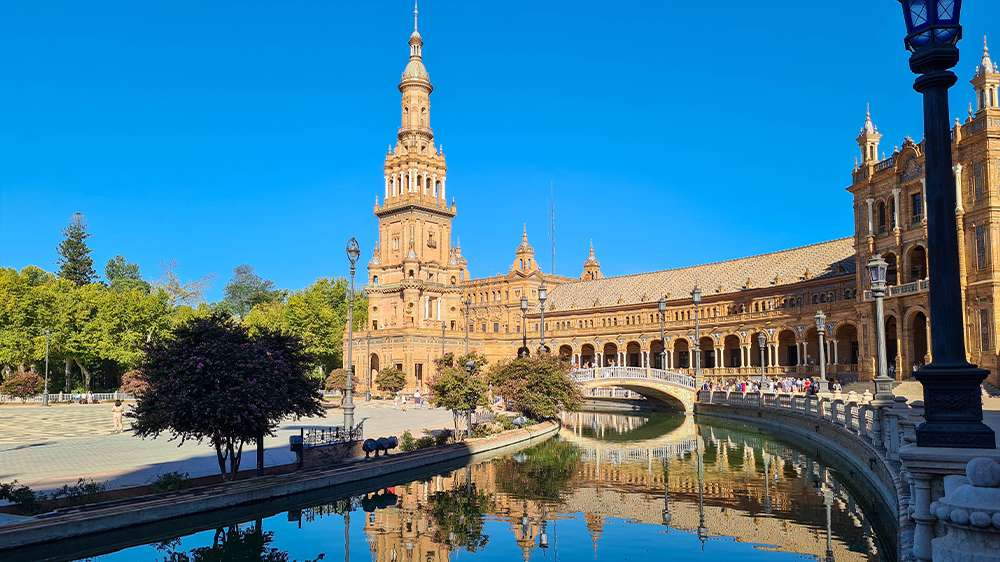
We visited Plaza de España twice. Once in the early morning, which was perfect: the golden light, cool air, and almost no crowds made it ideal for walking around and taking photos. We returned later during the day for a different feel and lighting, but it was hot and much more crowded, so I recommend going early if you can. You’ll want to linger here, whether it’s for photos, a quiet stroll, or just soaking in the elegance of the space.
Tips & Info
- Visit around 8–9 AM for the best light and the fewest people
- Open daily, free to visit
- Rent a rowboat for €6–€10 (30 mins) and paddle along the canal
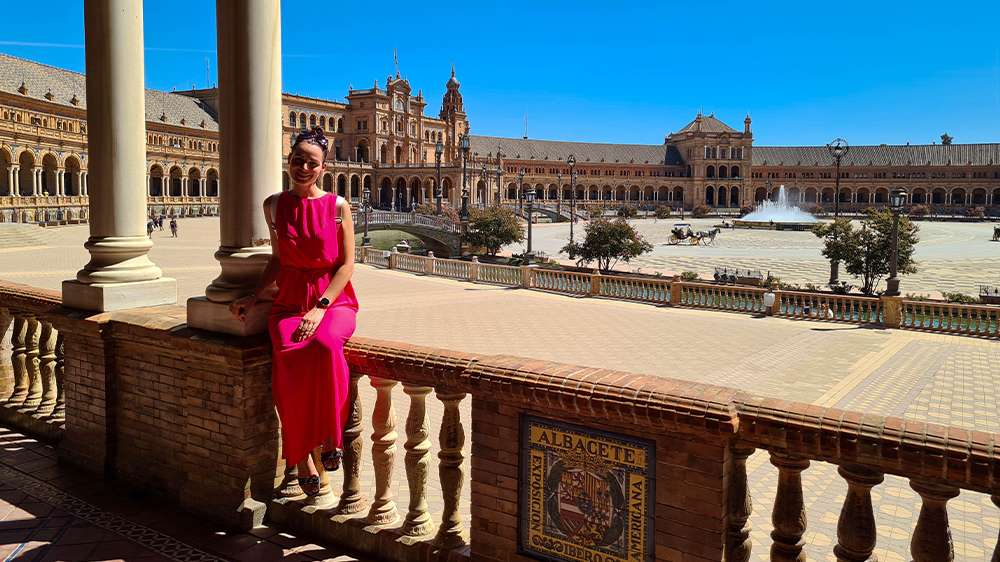
6. Take a Stroll through Maria Luisa Park
Just next to Plaza de España, you’ll find the beautiful Maria Luisa Park. It’s a lush, expansive green space filled with fountains, shady walkways, tiled benches, and elegant pavilions. Originally part of the private gardens of the San Telmo Palace, the park was redesigned and opened to the public for the 1929 Ibero-American Exposition.
We visited during the day and found it to be a peaceful escape from the busy city streets. With plenty of shaded areas, it’s a great place to wander, cool down after exploring the plaza, and enjoy the slower pace of Seville, surrounded by nature and history.
7. Discover Triana, Seville’s Most Authentic District
Just across the Isabel II Bridge lies Triana, one of Seville’s most vibrant and soulful neighbourhoods. Traditionally known for flamenco, ceramics, and river trade, this district has a different rhythm. It’s more local, full of colour, and brimming with character.
Wander along Calle Betis, a scenic riverside street lined with colourful houses and lively terraces. The views of the Cathedral and Torre del Oro across the river are some of the best in Seville, especially in the late afternoon when the light softens. It’s also a fantastic place to take photos: think bright facades, reflections in the water, and that unmistakable Seville charm.
Stop by the Mercado de Triana, a local market tucked just beside the bridge, where you’ll find everything from fresh produce and jamón to small tapas bars. A few steps away, Dulcería Manu Jara is a must for something sweet; their pastries are divine.
Triana is also home to some beautiful landmarks, like Cerámica Triana (a pottery museum and former tile factory) and the stunning Real Parroquia de Señora Santa Ana, one of the oldest churches in the city and a local favorite for weddings.
If you have time, consider taking a river cruise from the Triana side of the Guadalquivir. It’s a relaxing way to see the city from a new angle and a nice break from walking.
This is the kind of neighbourhood that invites you to linger. Grab a drink, take your time, and just enjoy the atmosphere. It’s Seville at its most genuine.
8. Book a Guided Walking Tour of Seville
One of the best and most rewarding ways to experience a new city is by joining a guided walking tour, especially when it’s led by a passionate local. We always try to do this on arrival to get our bearings and dive straight into the stories and traditions of the place. Surprisingly, even though this was already my third visit to Seville, I hadn’t done a walking tour before. So this time, it felt right to slow down and really learn more about the city’s history, culture, and food; beyond what you can find online.
We joined the Essential Free Tour of Seville, which runs for about 2.5 to 3 hours and is completely tip-based. It turned out to be one of the highlights of the trip. The guide shared fascinating stories and local legends, pointed out small details you’d otherwise miss, and gave us plenty of personal recommendations for what to eat and where to go after the tour. It was a total win-win.
The route covered many of Seville’s top attractions, including the Cathedral, La Giralda, Royal Alcázar, Torre del Oro, and Plaza de España. We also explored some lesser-known corners like Barrio del Arenal, Plaza del Triunfo, and the impressive Royal Tobacco Factory, which now houses the University of Seville.
By the end, we didn’t just know where things were. We understood their significance, the layers of history behind them, and how they all connect to Seville’s unique identity. If you’re visiting for the first time or even returning like I did, I highly recommend making time for one of these tours.
9. Stop by the Torre del Oro
Standing along the Guadalquivir River, the Torre del Oro — or “Tower of Gold” — is one of Seville’s most recognisable historic landmarks. Built in the early 13th century by the Almohads, it once formed part of the city’s defensive walls and served as a watchtower to control access to the river.
The name “Tower of Gold” likely comes from the golden shimmer of its stone in the sunlight — or possibly from the gold that once passed through the port during Spain’s trade with the Americas.
Today, it houses a small naval museum and offers rooftop views over the river and the Triana district. It’s a quick visit but worth stopping by, especially if you’re walking along the riverfront or on your way to/from Triana.
Entry to the museum is free, though a small voluntary donation is appreciated to help with its upkeep.
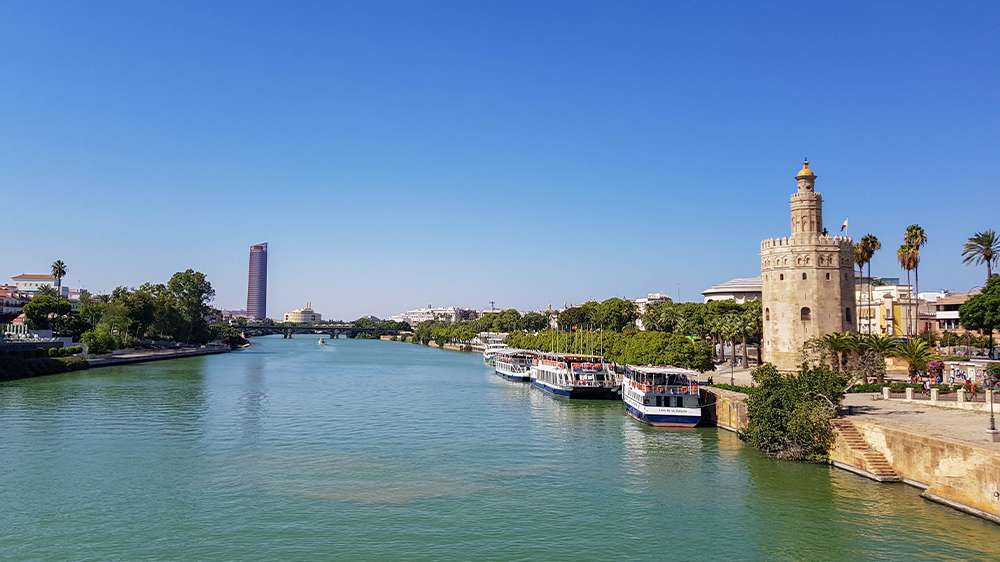
10. Experience a Flamenco Show in Seville
Seville is the heart of flamenco, and seeing a live performance here is something you absolutely shouldn’t miss. It’s not just dance — it’s emotion, passion, and storytelling woven together through music, rhythm, and movement. Even if you’ve seen flamenco elsewhere in Spain, watching it in Seville is on another level.
We watched a performance at La Milonga Tablao Flamenco, and it was fantastic. The setting was intimate, the dancing full of passion, and you could feel every beat and note in the room. This is where you can witness the true essence of Andalucian culture, not just a tourist show.
There are many great venues across the city, from small taverns to cultural centres. Just be sure to book in advance, as the best shows often fill up quickly.
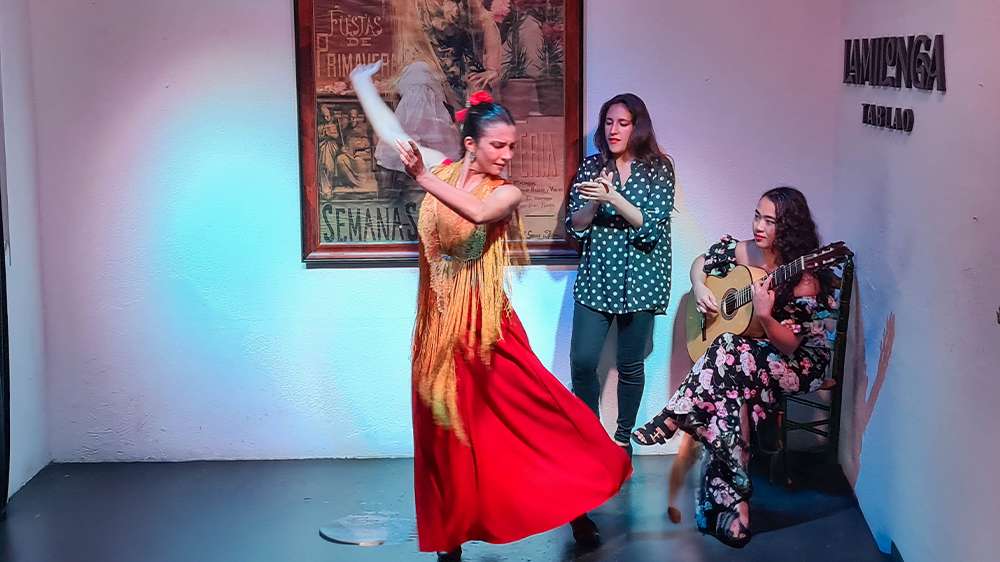
11. Step Inside Hotel Alfonso XIII
Even if you’re not staying there, it’s worth stopping by Hotel Alfonso XIII, one of the most iconic and luxurious hotels in Seville. Built in the 1920s for visiting royalty and dignitaries, the building is a stunning showcase of Andalucian and Moorish architecture.
We dropped in for a drink at the bar (sipped on a slightly pricey sangria!), and it was gorgeous — elegant, quiet, and full of character. It’s a great spot to pause and soak in a bit of old-world glamour in the heart of the city.
12. Walk Down Calle Sierpes
One of the most famous streets in Seville, Calle Sierpes runs through the heart of the old town and has long been a hub of local life. It’s a lively pedestrian street lined with traditional shops, bakeries, boutiques, and cafés — perfect for a stroll, a bit of window shopping, or picking up souvenirs.
It reminded us a lot of Calle Larios in Málaga; equally lively, elegant, and shaded by overhead canopies in the summer, which makes walking here even more enjoyable.
While it’s become more commercial over the years, the street still holds its charm. It’s a great place to experience a mix of old and new Seville, and you’ll likely pass through it more than once just exploring the centre.
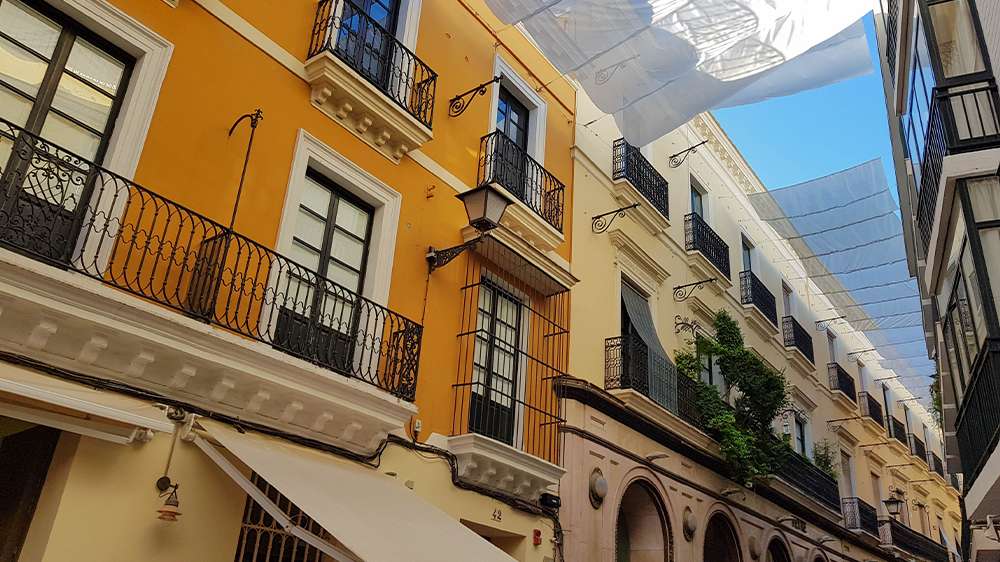
13. Sit at a Riverside Bar and Watch the World Go by
After a full day of exploring, one of the best ways to unwind in Seville is by grabbing a drink at a bar along the river. We stopped at Embarcadero, a laid-back spot right on the waterfront, and it was the perfect place to slow down and take it all in.
With views of the Triana Bridge and people passing by, it’s ideal for an afternoon drink or a golden-hour break. Order a tinto de verano, sangria, or even just a cold beer and enjoy the moment — no rush, no plans, just the gentle rhythm of Seville.
Where to Eat in Seville – Tapas, Brunch & Local Favorites
Food has always been one of the greatest joys of travel for me, and Seville truly delivered. This city lives and breathes good food. From wandering into a tiny tapas bar tucked down an old alley to lingering over brunch in a quirky café with good music and even better food, every bite felt like a little love letter to Andalucia.
I could talk endlessly about how happy good food makes me, especially when shared in the kind of relaxed, soulful atmosphere Seville is known for. Tapas culture in Seville is something special — unpretentious, full of bold flavours, and made for sharing. And while it’s known for its classic tapas scene, we also found some unexpectedly great brunch spots with creative menus and a relaxed, modern feel.
Below, I’m sharing the places we visited and loved most — some of them we stumbled upon by chance, others came recommended by locals during our walking tour. Whether you’re after traditional plates, modern twists, or sweet treats, this list is full of our personal food favorites in Seville.
Brunch & Coffee Spots
For lazy mornings and mid-day resets, these brunch places stood out with great food and atmosphere.
- Aba de Sevilla
- La Mala Brunch Rivero
- FILO Colon
- DODICI+ | BRUNCH SEVILLA
- Milk Away
- Jester
Tapas Bars We Recommend
From iconic old-school bodegas to buzzing modern spots, these are the tapas places we truly enjoyed.
- Ovejas Negras
- Casa Morales
- Casa Tomate
- Bodega Santa Cruz Las Columnas
- El Rinconcillo (oldest tapas bar in Seville)
- 100 Montaditos (budget-friendly sandwiches)
- Taberna del Arenal
- Catalina Casa de Comidas
- Bar Postiguillo Tapas
- Los Coloniales
- Bar La Cantina
Food Markets to Visit
Markets are perfect for a casual food stop and a taste of local life, or just to walk around and snack.
- Mercado de Triana
- Mercado Lonja del Barranco
- Mercado de Feria
Dining Tips for Seville
Dinner starts late — locals usually eat after 9 PM, so don’t worry if restaurants seem quiet earlier in the evening.
Tipping isn’t expected, but rounding up or leaving 5–10% for good service at sit-down places is appreciated.
Tapas are for sharing — start with a few and order more as you go.
Look out for menú del día (lunch menu) between 1–4 PM. It’s a great-value way to try local dishes like a true Sevillano.
Where to Stay in Seville
Finding the perfect base in Seville can really shape your experience. From charming boutique hotels in the historic old town to stylish apartments and popular hostels, there’s something for every type of traveler and budget.
We stayed in an apartment in Seville’s city centre, Céntriko Quintero, a modern one-bedroom apartment with a balcony and shared rooftop terrace. The location was perfect: close to all major sights, yet quiet and comfortable.
If you’re visiting in spring or summer, make sure to book a place with air-conditioning (trust us, it gets hot). A Seville hotel with a pool is a great bonus. It’s perfect for a cooling dip during siesta hours.
Recommended Areas to Stay
- Santa Cruz: The prettiest part of town, full of cobbled streets and boutique hotels. Great for first timers
- El Arenal: Central and close to the river, ideal if you want a balance of sightseeing and nightlife
- Triana: A more local feel, across the river, with great tapas and a creative vibe
Top Picks to Check
- Hotel Alfonso XIII – A stunning 5-star hotel in Seville, known for its Moorish architecture and luxury experience
- TOC Hostel Sevilla – One of the best-rated hostels in Seville Spain, popular with solo travelers and backpackers
- Las Casas de la Judería – A beautiful boutique hotel in the heart of Santa Cruz
How to Get to and around Seville
Getting to Seville
Flight
The closest airport is Seville Airport (SVQ), located just 10km from the city. You’ll find direct flights from major European cities with Ryanair, Vueling,Iberia, etc.
Train
Seville is well connected by high-speed AVE trains. You can get here in around 2.5 hours from Madrid and under 4 hours from Barcelona. Book early on Renfe.com for the best deals.
Bus
Budget-friendly and comfortable, long-distance buses (like ALSA) connect Seville to nearby cities like Málaga, Granada, Córdoba, and even cross-border routes to Portugal.
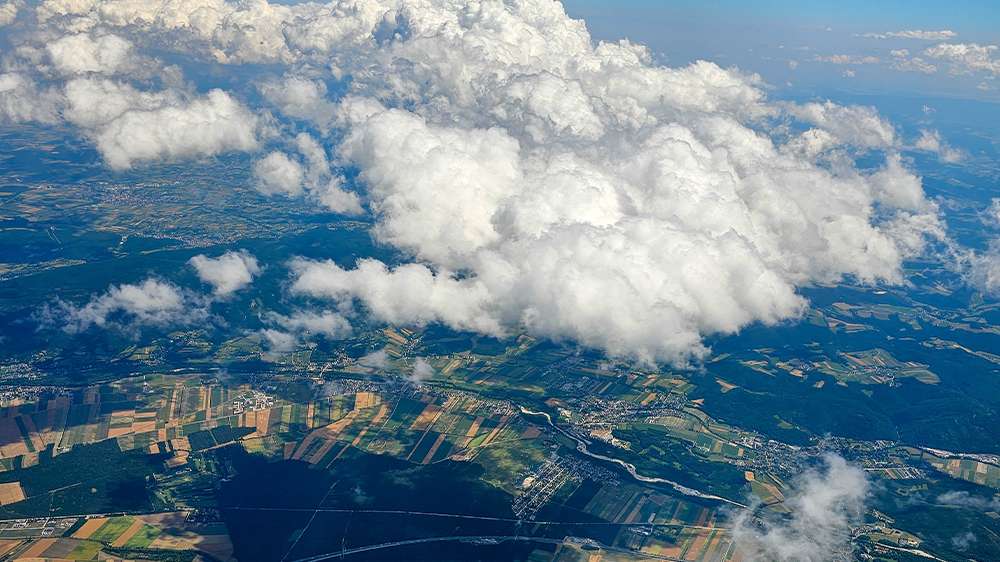
Getting from Seville Airport to the City Centre
- Take the EA (Especial Aeropuerto) bus from the airport to Plaza de Armas station or get off earlier in the centre of Seville. It runs every 15–30 minutes and the journey takes about 35-40 minutes. Single trip costs €6, return ticket costs €8. Click here for further info
- Taxis and Uber are available too. You can expect to pay around €25–30 for a ride into the centre
Getting around Seville
Walking
Similarly to Valencia, the best way to experience Seville is on foot. The old town is compact, full of charm, and easy to explore, with lots of hidden gems around every corner
Public Transport
The MetroCentro tram (T1 – red line) is ideal for quick trips through the city centre, while the Seville metro reaches the outer districts. The local bus network is also a good option, with single rides costing around €1.40 — tickets can be bought directly on board. Click here to find out more about tickets & fares
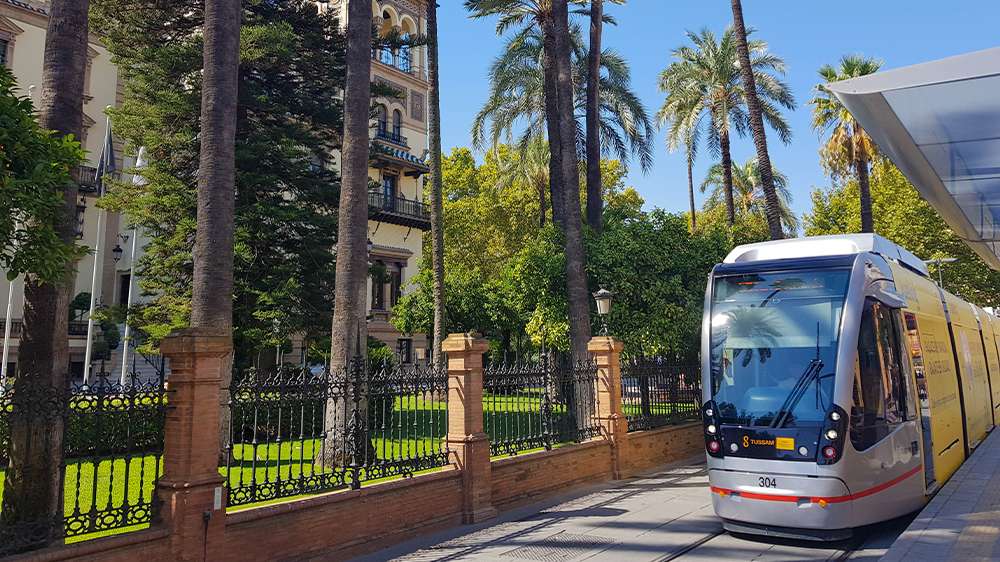
Cycling
Seville is one of the most bike-friendly cities in Spain (along with Valencia!) with a fantastic network of bike lanes. Rent a bike from local shops or use the SEVici bike-share system
Tip: We love walking wherever possible, and Seville is perfect for it. Stay in a central area like Santa Cruz, El Arenal, or Triana, and you’ll be able to explore everything on foot.
You’ll wander through hidden alleys, pass quirky little shops, and be surrounded by the sweet scent of orange trees. Keep an eye out for a local treat too; some spots sell Seville’s unique orange wine, often hidden in the most unexpected corners.
Practical & Budget Travel Tips for Seville
Maximise your time and budget in Seville with these smart travel tips:
- Best Time to Visit: Plan your trip in spring (Apr–May) or late autumn (Oct–early Nov) to enjoy pleasant weather, fewer crowds, and better prices
- Free Entry to the Alcázar: You can enter the Real Alcázar for free during the last hour on Mondays, but make sure to book your ticket online in advance to secure your spot
- Card or Cash: Cards are widely accepted across Seville. For the best rates, use cards like Revolut or Monzo to avoid extra fees
- Stay Connected: Use Airalo for an easy eSIM setup or grab a local SIM from Orange or Vodafone once you arrive
- Tap Water is Safe: Bring a reusable bottle, as tap water is drinkable throughout the city
- Budget-Friendly Stay: TOC Hostel Seville is a top pick for budget travelers, modern, clean, and located in the heart of the city with great amenities
- More Travel Tools: For more ways to save and plan smart, check out our Ultimate Travel Resources Guide
Final Thoughts on Visiting Seville
From the scent of orange blossoms in spring to the rhythm of flamenco echoing through the cobbled streets, Seville is pure joy. It’s one of those rare cities that leaves a lasting imprint on your heart — colorful, musical, full of sunshine and soul.
After three visits, I can honestly say it never loses its charm. There’s always something new to experience, and even the familiar places feel magical all over again. Seville is not just a destination, it’s a feeling. A must on any Spain itinerary, and easily one of my favorite cities in Europe.
If you’re looking for the best things to do in Seville, Spain, I hope this guide helps you discover just how special this city truly is. From sunset views at Las Setas to tapas hopping in Santa Cruz, these are the moments that make Seville unforgettable.
Plan your trip to Seville
- Check available hotels in Seville, Spain
- Book your favorite Seville attractions and tours
- Don’t forget your travel insurance (better safe than sorry!)
Do you have questions or planning a trip to Seville soon? Send me a message here or on social media, I’d love to help!
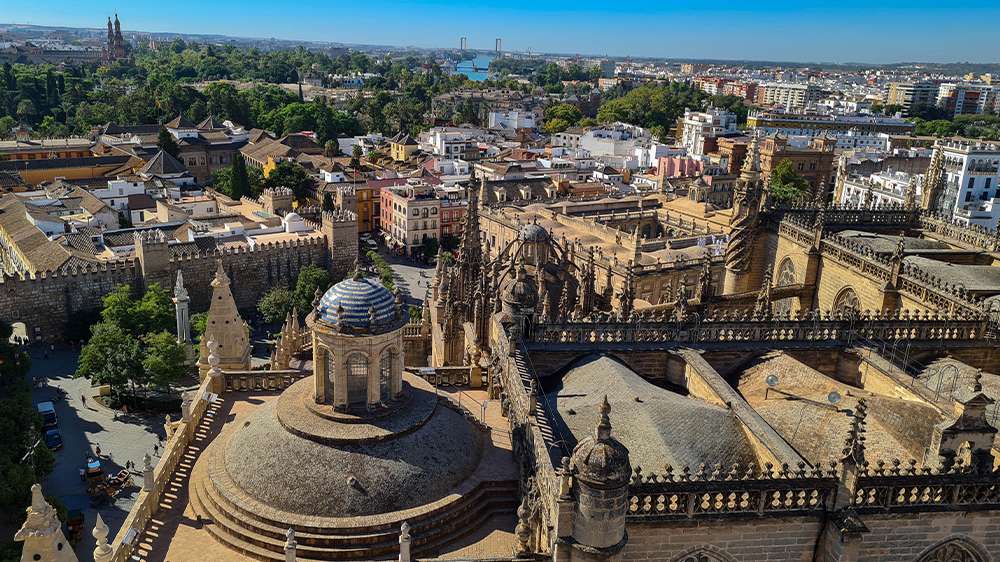
Seville Map
Get Inspired
Loved exploring Seville, Spain? Keep the magic alive with a closer look at some of its most iconic moments.
In this video, we take you along for a perfect Seville day: wandering the soulful streets of Triana, indulging in local tapas, and catching a magical sunset from Las Setas de Seville, Spain. It’s a little glimpse into the charm, flavor, and rhythm of this unforgettable Spanish city.
Whether you’re planning your own trip or just daydreaming about Andalucía, this video is sure to inspire.

